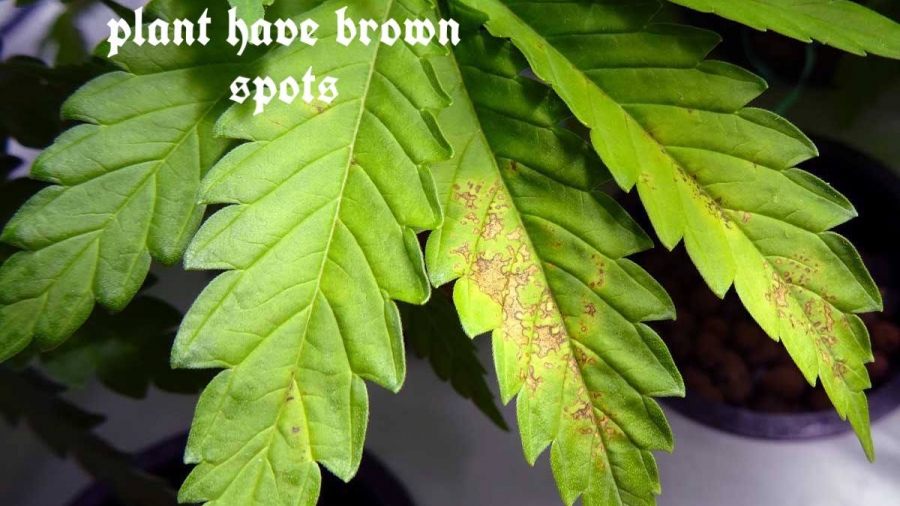What is cannabis leaf septoria?
Cannabis leaf septoria (also known as ‘yellow leaf spot’) is a fungal infection that autoflowering cannabis plants are particularly vulnerable to, especially if they are being grown outdoors.
This plant disease is caused by the fungal pathogens Septoria neocannabina, and S. cannabis. The disease spores can spread through bacteria, nematodes, animals, and other plant disease agents to infect your plant with cannabis leaf septoria. A warm and wet environment is particularly helpful in allowing spores to germinate.
Cannabis leaf septoria typically affects plants as soon as they enter the flowering stages. It begins spreading on the lower leaves first and then slowly climbs upwards to attack multiple layers of leaves. The fungus may also attack the stem.
Why is cannabis leaf septoria dangerous?
If not controlled during its earlier stages, pot leaf septoria can wreak havoc in your autoflowering cannabis garden.
This plant disease interferes with leaf processes such as photosynthesis and weakens your cannabis plant’s health by inhibiting plant growth, destroying foliage, and affecting the size and quality of yield. Damaged leaves can dry out, die, and even fall off entirely.
Despite not being a deadly plant disease, cannabis leaf septoria still has the potential to suck the strength out of your autoflowering cannabis plant, which can lead to a poor harvest.
How to tell my plant is suffering from cannabis leaf septoria?
The most telling sign of a cannabis plant suffering from cannabis leaf septoria is the formation of yellow and brown spots on the upper and lower sides of your plant’s leaves. On average, these spots measure anywhere between 1.5 to 6.5 mm across in length.
This fungal infection begins with spots being small, round, and light in color, but they progressively get larger, darker, and more irregular in shape. You may notice that some spots have a reddish-brown perimeter. This observation is the result of infected plant tissue, which has fallen off. Meanwhile, other spots may have a stiff growth in the middle, similar to a pimple.
Note that each spot represents the containment of a fungal spore that was able to germinate successfully upon landing on your plant.
How to treat cannabis leaf septoria?
To begin your plant’s leaf septoria treatment, you will have to get rid of every leaf which has been affected by the disease.
Pruning away dead foliage will help minimize your plant’s exposure to leaf septoria vectors, and allow improved plant nutrient circulation to new leaves. Depending on how far the disease has progressed, merely getting rid of infected leaves may be enough to prevent it from spreading further completely.
Here are some helpful leaf septoria treatment tips that you can implement:
- Enable better air circulation by introducing a fan, opening all windows, and creating space between your plants. Better ventilation can help humidity come down by as much as 50%.
- Avoid watering your plants in the evening and night. Water management helps prevent moisture from building up and can help avoid fungal growth.
- Try to make sure that day and night temperature variations within your cannabis garden have a maximum difference of 5 degrees Celsius. A narrow margin of temperature change helps plants recover quickly.
- Organic treatments such as 20% horsetail tea solution and neem oil can help your plant combat against marijuana leaf septoria. Spray this on your plant every fifteen days.
How to avoid cannabis leaf septoria?
Despite being a common cannabis plant disease, leaf septoria is entirely avoidable in a cannabis garden.
Cleanliness and plant hygiene are critical to avoiding cannabis leaf septoria from latching itself onto your autoflowering cannabis plants. Dust accumulation, dead leaves in your growing area, and dirty gardening tools are common culprits in helping leaf septoria incubate in your cannabis garden.
Clear out any weeds in your growing area, as they can host fungal spores. Rake your soil, remove fallen dead vegetation, and apply a layer of mulch to restrict the spread of fungal spores from reaching your cannabis plants.
Keep track of temperature and humidity to lower the risk of your autoflowering cannabis plants contracting cannabis leaf septoria.
Boron
Boron plays a role in different plant processes including maturation, seed production, and protein formation.
Signs of Boron Deficiency
- Uppermost leaves grow
- Takes a long time for leaves to mature
- Leaves appear to be twisted or curled
- Stems become hollow and rough
- Roots grow slowly; secondary roots shorten and swell
Copper
Cannabis plants need copper for photosynthesis, respiration, and metabolism. Although rare, deficiency if not addressed may be fatal.
Signs of Copper Deficiency
- Younger leaves become affected first
- Discoloration is noticeable on the tips of the leaves
- Weird bluish metallic glint
- Flowers in male marijuana plants cannot mature
- Female plants show abnormal stigmas
- Roots grow unusually large and start to decay
Calcium
This nutrient is essential in keeping the cell wall tissues of the plants intact. Aside from this, it also takes part in root development and protein synthesis. Without enough calcium, the plant will show distorted growth.
Signs of Calcium Deficiency
- Leaves turn dark green or have necrotic spots
- New leaves are small and distorted
- Flowers or buds develop slowly
- Branches are weak
- Develop slimy root rot
Iron
Iron facilitates the production of chlorophyll – the green pigment that absorbs light and works with carbon dioxide to make plant food.
Signs of Calcium Deficiency
- Young leaves may turn yellow, but veins are still green
- Minimal bud growth, twisted stems
- Roots may be smelly, brown, and mushy.

Out of all the articles I’ve read it looked like my plant had a lack in potassium but after giving her more I noticed nutrient burn but after reading this by far the best read – very helpful. Thanks!